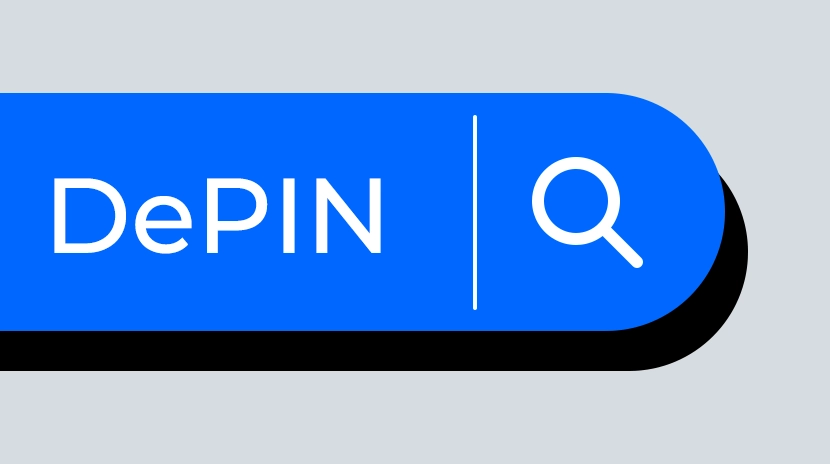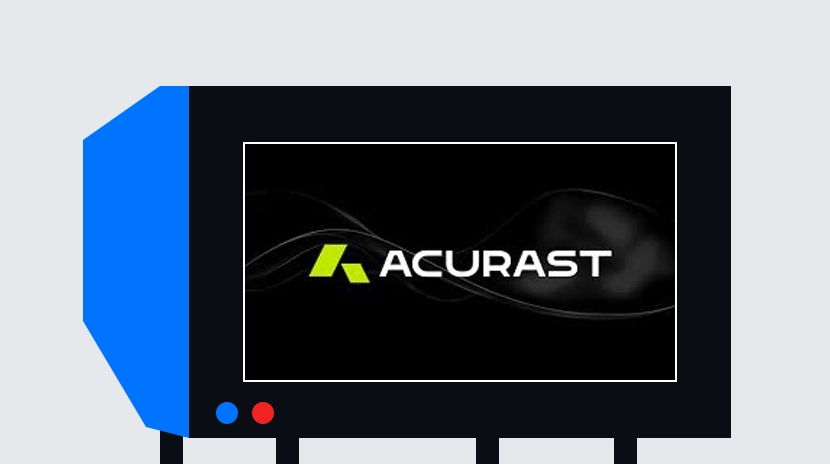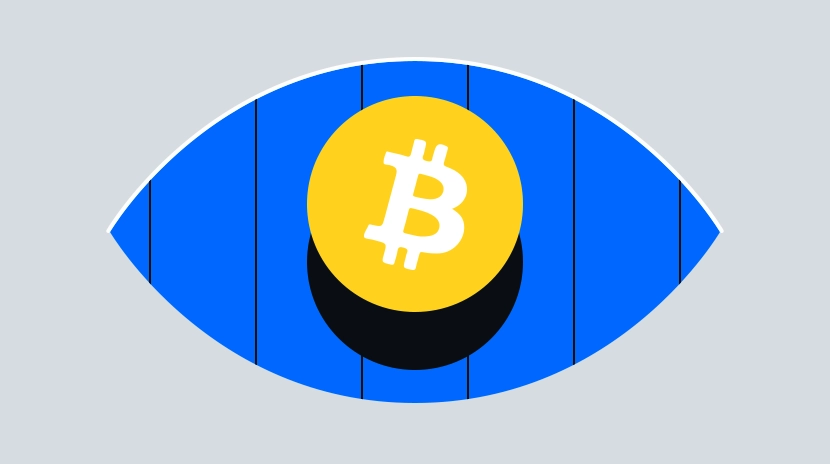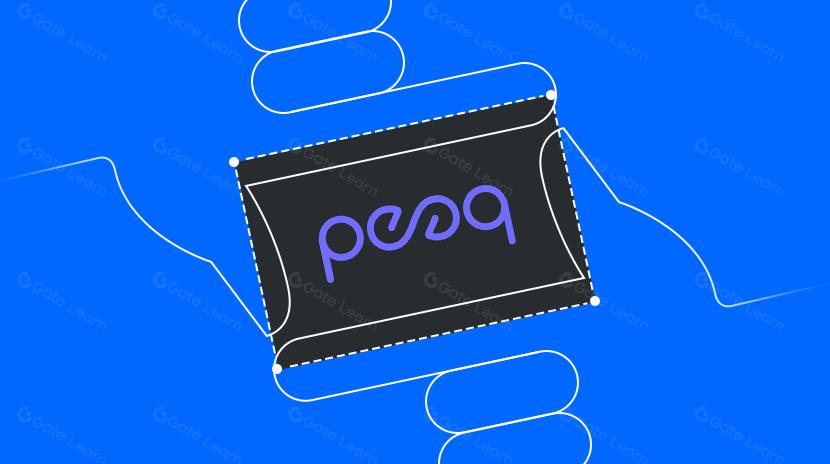DePIN 项目声势浩大,运营成色究竟几何?
前言
近年来,DePIN 概念在加密市场持续升温。根据 Messari、Delphi Digital 等研究机构的数据,DePIN 赛道的市场潜力被估值为数万亿美元。然而在泡沫与预期之间,真实的收入表现才是检验项目价值的关键标准。
在过去的加密周期中,许多项目依赖“激励驱动增长”模型,短期内吸引了大量用户和节点部署,但随着代币价格波动、奖励衰减与用户热情下降,部分项目难以维持健康的现金流与生态活力。因此,收入成为衡量 DePIN 项目可持续性的重要参考指标。
本篇文章将基于公开链上数据、项目方披露报告与第三方研究,选取目前具有代表性的 DePIN 项目进行深度盘点,涵盖其主要收入来源、商业模式、关键运营指标与潜在扩展路径。我们希望通过这一盘点,为行业观察者提供更具参考价值的分析视角,帮助读者理解:哪些 DePIN 项目正在走向真正的“自我造血”,哪些仍在探索“从激励走向收入”的转型之路。
Aethir:构建去中心化 AI 云计算的超级引擎

(来源:官网截图)
一、项目简介与愿景
Aethir 是一个面向 AI、云游戏及虚拟化计算场景的去中心化 GPU 云计算平台,旨在成为“为大众服务的 GPU 聚合器”。项目通过构建一个由企业、矿场、数据中心及零售用户组成的全球分布式网络,为计算密集型应用提供高性能 GPU 服务。Aethir 的核心愿景是降低 AI 与高性能计算的准入门槛,打破中心化云厂商的技术与成本垄断,并为 Web3 世界带来更开放、灵活的计算基础设施。我们在之前的文章中系统介绍过 Aethir 项目。
二、盈利逻辑与营收表现
Aethir 采用双边市场模型连接 GPU 提供方与计算需求方,通过 $ATH 代币结算并收取服务费获利。其主要盈利路径包括:
- 向计算需求方(AI公司、游戏工作室、电信企业等)提供 GPU 云服务并收取费用;
- 向 GPU 节点运营商收取平台佣金(20%服务费);
- 从代币排放中提取 5% 用于网络运营与激励。
根据公开信息,2024年 Aethir 已实现年化收入(ARR)9100 万美元,是目前 DePIN 赛道中营收表现最突出的项目之一。
在用户端,Aethir 预计月活跃用户将达到 1,000 万。社交层面,其社区已积累超过 17 万名追随者,显示出强大的外部关注度和增长潜力。
三、代币经济学
Aethir 的原生代币 $ATH 是平台的价值捕获核心。其用途涵盖网络支付、节点质押、治理投票、以及奖励与激励。
平台分配 $ATH 总供应量的 50%用于激励机制,代币激励分三种形式:
- 服务费激励:80% 服务费返还节点运营商;
- 渲染工作证明:完成计算任务后获得代币奖励;
- 能力证明:即便节点处于待命状态,也可获得基础奖励。
该设计在保障网络质量的同时,也降低了运营方的进入门槛和财务压力。

(来源:官网)
四、未来展望与挑战
相比 Akash、Render、io.net 等竞争者,Aethir 在 GPU 规格(H100)、客户能力(电信与游戏大厂合约)与收入规模(超 9,000 万美元 ARR)方面展现出明显优势。其飞轮效应正逐步形成,合同推动节点利用率提升,节点推动网络价值增长,从而吸引更多合约与资本注入。
Aethir 在全球范围扩展 GPU 云资源的过程中,必须面临日益严峻的数据与计算监管问题。以 欧盟《数字服务法》(DSA) 和 《人工智能法案》 为例,若 GPU 资源被用于未经授权的 AI 模型训练或推理,平台可能需承担合规责任。此外,欧盟对云服务提供商有较严格的数据主权和服务透明度要求,对于 Aethir 的“全球节点共享”模式提出挑战。未来若平台在欧盟部署节点或服务企业客户,可能需引入 KYC、数据审计等机制,这将对其“去信任、去许可”的设计理念构成冲击。
Braintrust:Web3 自由职业平台的收入黑马

(来源:官网截图)
一、项目简介与愿景
Braintrust 是一个去中心化自由职业市场,致力于连接全球顶级人才与企业客户,为软件工程、设计、产品管理等高端岗位提供撮合服务。与传统平台(如 Upwork、Fiverr)相比,Braintrust 的商业模式以“去中介化”为核心,平台由社区所有,收入用于回购代币,并不抽取自由职业者的佣金。项目愿景是建立一个更公平、透明且由用户所有的全球人才市场,释放自由职业经济的真正潜能。
二、盈利逻辑与营收表现
Braintrust 的主要盈利来源是向企业客户收取 15% 的服务加价费。不同于传统平台向自由职业者抽成,Braintrust 将费用完全转嫁至需求侧,保障人才的收入完整性。
根据公开数据,Braintrust 2024 年实现年化收入(ARR)约 330 万美元。
三、代币经济学
Braintrust 的原生代币 $BTRST 是平台治理与激励的核心,具备以下功能:
- 平台治理:代币持有者可参与提案与投票,决定平台规则与费用结构;
- 激励机制:推荐人才或企业可获得收入分成;
- 质押与声誉系统:人才与雇主可通过质押 $BTRST 增加曝光与信任度;
- 回购销毁:平台收入全部用于回购 $BTRST,提高代币稀缺性。

(来源:研究报告)
四、未来展望与挑战
Braintrust 的核心优势在于其可持续的现金流与代币回购模型,与多数依赖补贴的 Web3 项目形成鲜明对比。其商业模式高度契合自由职业市场结构性变化,特别是在远程办公、技术人才流动性提升的趋势下,具有强成长潜力。
尽管 Braintrust 采用“企业付费 + 去抽佣”的创新模式,但其在全球人才市场的合规扩展仍面临挑战。根据美国 IRS 和欧盟 GDPR 的相关规定,自由职业者平台需对雇佣关系、税务责任、数据处理方式保持透明。Braintrust 若扩大 Web2 企业客户接入,必须审慎处理平台是否构成“劳务中介”或“雇主”的法律边界。此外,$BTRST 作为激励媒介的使用,也可能被部分监管视为“工作代币”或“证券”,存在合规不确定性。
GEODNET:全球最大实时定位 DePIN 网络的崛起

(来源:官网截图)
一、项目简介与愿景
GEODNET 是一个基于 GNSS(全球导航卫星系统)构建的去中心化高精度定位网络,通过部署广泛的 RTK(实时动态定位)基站,为自动驾驶、农业、机器人等场景提供厘米级定位服务。项目愿景是成为“物理智能设备的定位基石”,用去中心化方式替代昂贵、封闭的传统定位服务商(如 Trimble),推动智能机器人与自动驾驶设备的全球普及。
截至 2024 年底,GEODNET 在全球部署了超过 13,500 个参考基站,覆盖 140+ 国家、4,000+ 城市,是目前全球节点数量最多的 RTK 网络之一。

(来源:官网)
二、盈利逻辑与营收表现
GEODNET 采用双边市场模式连接定位数据提供者与使用者,通过数据订阅与企业合作变现。其收入逻辑包括:
- 企业客户直接购买 GNSS 校正数据订阅;
- 第三方设备厂商(如农业无人机、机器人)集成 GEODNET 数据并分润;
- 所得收入 80% 用于市场回购并销毁 $GEOD 代币,形成代币价值闭环。
2023 全年,GEODNET 的@wunderlichvalentin/geodnet-why-were-bullish-3515812dcd18">年化收入(ARR)达 63 万美元,据称, 2024 年这一数值增长 400%以上,或超过 300 万美元。
三、代币经济学
GEODNET 原生代币为 $GEOD,基于 Solana 网络发行,设计逻辑如下:
- 激励机制:节点部署者(称为“卫星矿工”)通过上传定位数据获得 $GEOD 奖励;
- 通缩设计:平台使用 80% 收入回购 GEOD 并销毁,长期压缩供给;
- 硬件绑定:矿工需购买兼容 GNSS 设备(如 HYFIX Station),确保数据真实;
- 分区激励:每个 Hex 区域仅第一个高质量节点获得满额奖励,鼓励网络广覆盖。
四、未来展望与挑战
GEODNET 的定位赛道与 IoT、自动驾驶、农业技术密切相关,其潜在市场规模巨大。与传统企业如 Trimble 相比,GEODNET 不拥有硬件、不建基站、不维护销售渠道,而是通过纯粹的加密网络协调分布式硬件提供服务,从而以更低成本实现更高扩展性。
GEODNET 的基站数据涉及高精度地理信息(如厘米级坐标),在部分国家和地区(如中国、印度、俄罗斯)被归类为敏感信息,需取得特许牌照或经政府备案。若节点运营者在未授权地区部署设备,可能引发地理数据滥用、国家安全等合规风险。此外,GEODNET 的“硬件即矿机”模式面临设备质量控制挑战,若第三方设备无法持续提供高质量数据,将影响整网稳定性与节点可信度。
NodeOps:通往去中心化计算的节点编排引擎

(来源:官网截图)
一、项目简介与愿景
NodeOps 是一个面向区块链节点与通用计算资源的去中心化物理基础设施网络(DePIN),最初起步于 Node-as-a-Service 平台,现已演变为支持 AI、RPC、验证节点、存储等多种工作负载的多功能计算编排层。其核心愿景是通过无许可、模块化的节点部署工具,构建一个面向 Web3、AI 与企业级应用的去中心化云资源市场。
NodeOps 致力于消除传统云服务的中心化、高成本、准入门槛等问题,为开发者和机构提供一键部署、可验证、安全可靠的计算服务。
二、盈利逻辑与营收表现
NodeOps 的商业模式基于双层结构:
- NodeOps Console:为用户提供可视化节点部署平台,按订阅模式收取费用;
- NodeOps Network:作为底层编排层,撮合计算资源供需,平台从交易中抽成并收取验证服务费。
根据 Messari 数据,NodeOps 2024 年实现年化收入(ARR)约 250 万美元。验证用户超 70 万,节点部署数量突破 88,000 个,覆盖 80 多条区块链网络。

(来源:Messari)
三、代币经济学
NodeOps 近期推出其原生代币 $NODE,作为平台的核心经济资产。其用途包括:
- 节点质押:计算提供者需质押 $NODE 才能加入网络,激励诚实行为;
- 支付媒介:未来节点部署和计算调用将支持使用 $NODE 支付;
- 治理与分红:持币者可参与平台治理,并分享平台收益;
- 激励机制:提供者可通过完成计算任务、保持高在线率等获得 $NODE 奖励。
此外,NodeOps 还推出了辅助代币 $UNO(Universal Node Orchestrator),用于利润分红与生态特权。
四、未来展望与挑战
相较 Akash、Aethir 等项目,NodeOps 的差异化在于其“通用节点编排”定位,既服务于链上基础设施,也面向 Web2/AI 场景,具备更强的灵活性与横向扩展能力。不过,NodeOps 仍处于早期阶段,需在提升 Console 的稳定性与部署体验、拓展更多高质量计算提供者等方面持续打磨。
NodeOps 当前仍处于早期阶段,其“多任务计算编排”设计可能在未来触及多个监管灰区:一方面,部分部署任务可能涉及 机器学习模型训练、匿名匿名节点代理等敏感计算任务,需履行平台责任;另一方面,NodeOps 计划引入代币支付与分润机制,可能触发美国 SEC、欧盟 MiCA 对“代币即证券”的判断标准。此外,节点部署器如涉及用户身份验证、存储服务,亦可能面临 数据保护法规(如 GDPR) 的合规压力。
Akash Network:去中心化云计算的持续进化者

(来源:官网截图)
一、项目简介与愿景
Akash Network 是一个基于 Cosmos SDK 构建的去中心化云计算市场,旨在通过开放竞价机制连接全球算力供需双方,打破 AWS、Google Cloud 等中心化巨头的垄断,降低云计算成本,提升资源利用效率。自 2015 年成立以来,Akash 一直坚持“无需许可、去中心化”的理念,其愿景是打造一个高性能、弹性、安全的“超级云”平台,使开发者和企业可以自由部署任意规模的应用。我们在之前的文章中对 Akash Network 项目亦有涉及。
二、盈利逻辑与营收表现
Akash Network 采用反向拍卖机制撮合供需,计算买家以 $AKT 或 $USDC 支付租金,资源提供商竞价出单。平台通过收取服务费盈利:使用 AKT 支付时收取 4% 费用,使用 USDC 支付时收取 20%。此外,Akash Network 还设有通胀机制,年通胀率达 13%,用于激励节点和社区基金。
2024 年,Akash Network 年收入显著增长,连续四个季度实现营收突破,全年累计营收突破 136 万美元,同比增长超 300%。
根据 Messari 的数据,Akash Network 2024 年分季度收入为:
截至 2024 年底,Akash Network 拥有:
- 17,700+ CPU 核心;
- 258 个 GPU 节点(包括 A100、RTX 3000/4000 系列);
- 数十个数据中心及矿工节点。
三、代币经济学
Akash Network 的原生代币 $AKT 是平台运行的核心。具备以下功能:
- 支付媒介:用于租赁资源,可享受更低服务费;
- 质押与安全:通过 DPoS 共识机制保障网络安全;
- 治理机制:代币持有者可参与提案与投票;
- 激励机制:通胀产出用于奖励节点与社区建设。

(来源:Tokenomist)
四、未来展望与挑战
Akash Network 在去中心化计算赛道的优势主要体现在:
- 资源稳定:CPU 与 GPU 节点数量持续增长;
- 使用门槛低:反向拍卖机制与图形化部署工具降低开发难度;
- 生态拓展快:多协议集成推动平台用户增长;
- 经济模型成熟:质押、通胀与费用机制形成自洽飞轮。
Akash 的反向拍卖机制固然降低了部署门槛,但由于资源提供者构成多元,部分节点可能来自 未审计的数据中心、匿名矿工或境外机构,在合规性与服务稳定性方面存在隐患。尤其是 Akash 网络计划支持 AI 训练任务与企业级部署,未来一旦服务输出至欧美市场,需面对诸如 DSA、人工智能法案、数据本地化法案等复杂监管框架。平台如何确保服务任务不被滥用(如挖矿、DDOS 中转、非法训练)也将成为关键考验。
结语

在 DePIN 的热潮之下,无数项目打着“去中心化基础设施”的旗号涌现,但真正实现产品落地与收入增长的项目,仍是少数。本系列聚焦的五个代表性 DePIN 项目各具特色,却有一个共同点:都已实现了真实、可验证的商业收入与用户增长,并初步构建了自我强化的经济飞轮。
这些项目不再仅仅依赖叙事驱动,而是通过真实合同、实际部署、用户留存与收入增长,验证了 DePIN 模型的可行性与延展性。它们共同预示着:DePIN 已从“激励引导的实验阶段”迈入“收入驱动的产业化阶段”。
未来,随着 AI、物联网与 Web3 应用的大规模落地,DePIN 有望成为链接虚拟与现实的关键基础设施层。真正能够穿越周期、构建护城河的项目,将不再是“最会讲故事”的那个,而是最早建立正向现金流与真实用户价值闭环的那个。DePIN,正在从叙事走向现实,从愿景走向商业。
请注意,投资加密货币市场具有高波动性和高风险。在做出任何投资决策之前,请务必进行充分的研究,并根据自己的风险承受能力进行判断。本文不构成财务建议,投资需谨慎。
相关文章

加密叙事是什么?2025年热门叙事盘点(更新版)

2025 年 DePIN 叙事的展望

一文带你了解 Acurast

2025 加密前瞻——听听各大投资机构怎么说(一)

收藏零撸!DePIN 挂机项目大盘点
